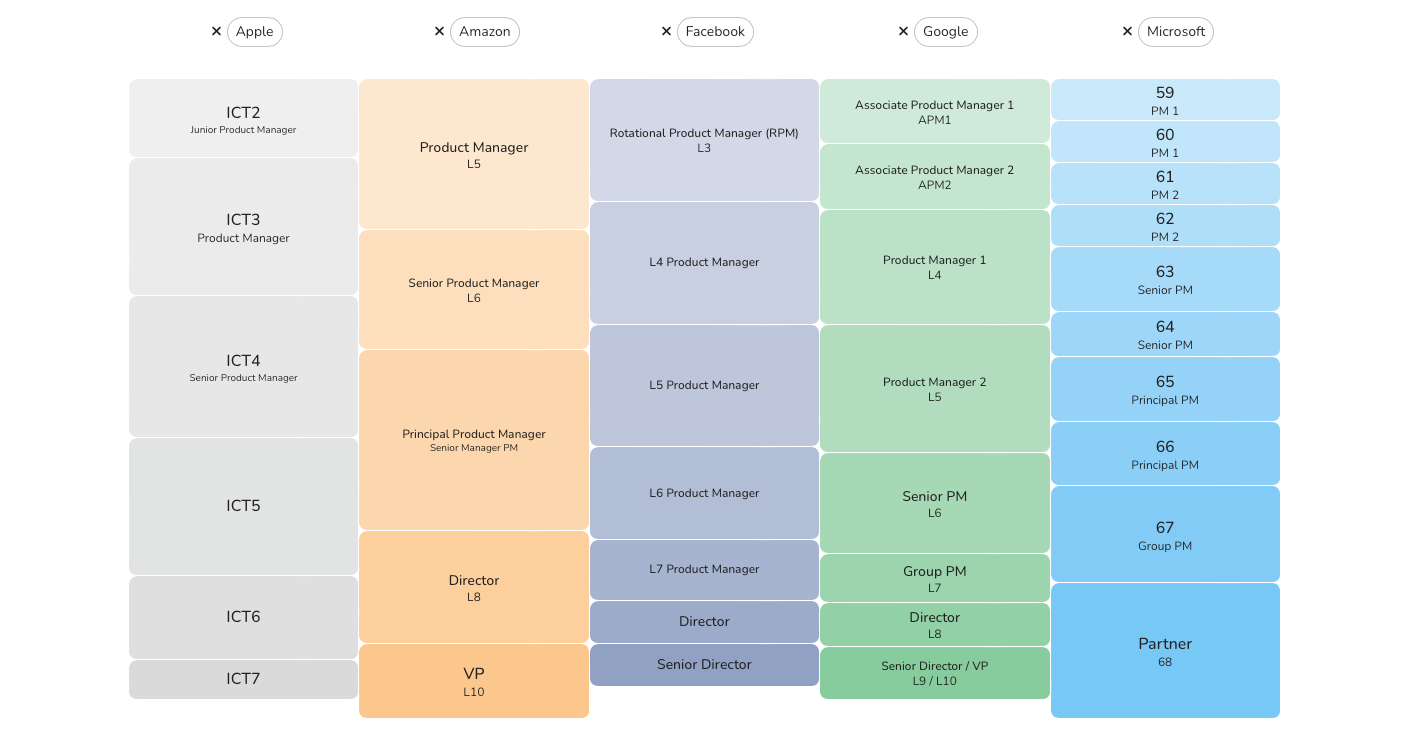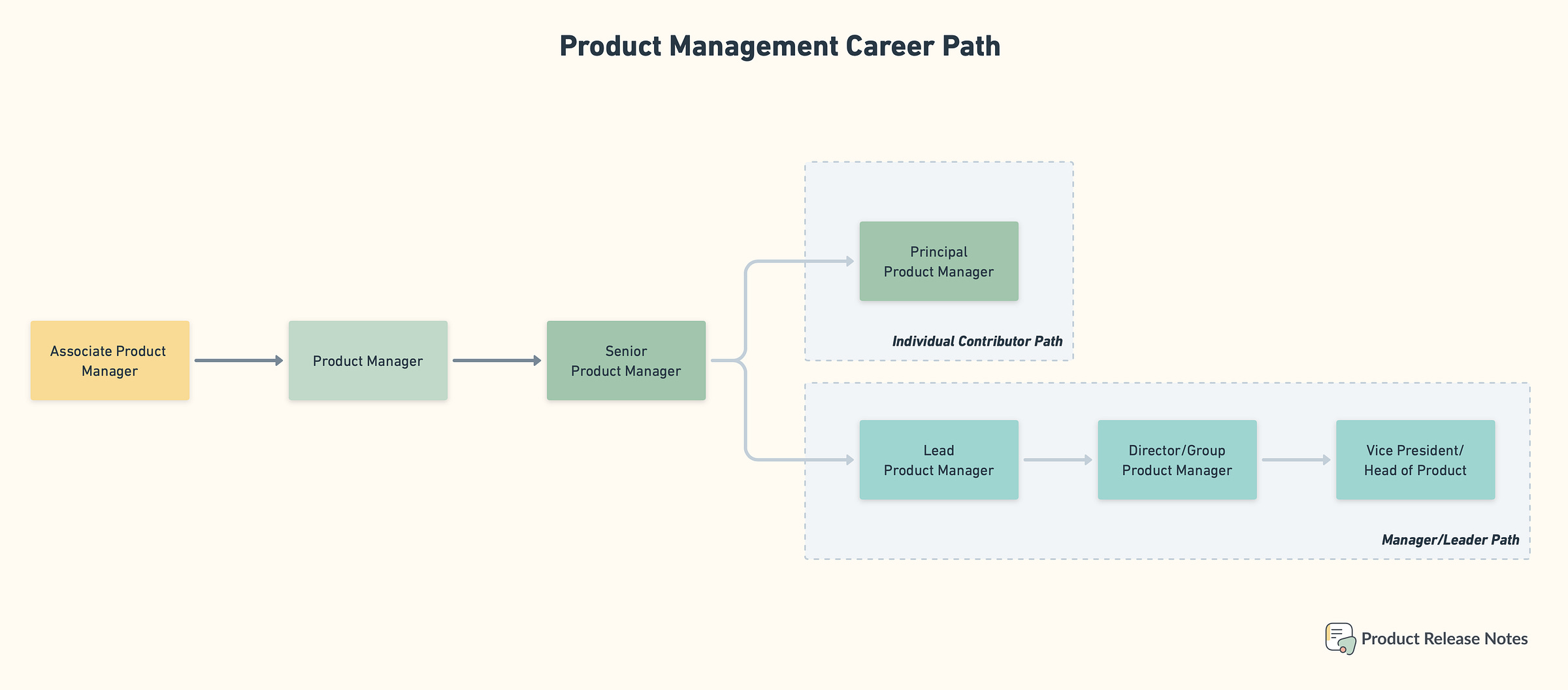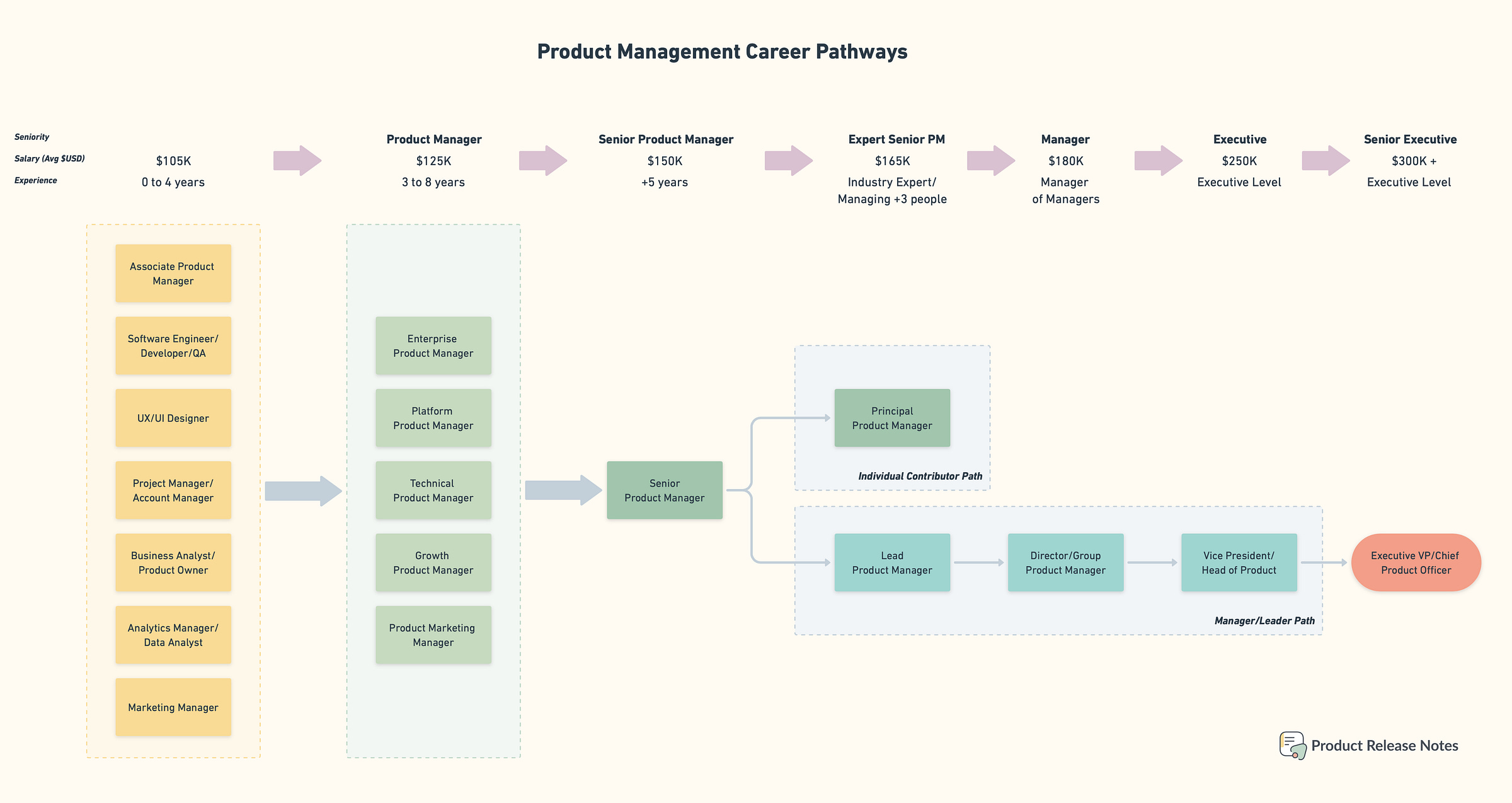How to advance in the Product Management Career Path
Get to know the responsibilities of the most common job titles and how to jump to the next level.
Product management is an exciting and rewarding field, offering individuals the opportunity to help define the vision for a company’s product portfolio and transform an idea into a product. But how can someone move up in the product management career? Let’s walk through the career ladders available in the product management field and discuss the various paths an individual can take to advance their career.
But before we step up on the ladder, keep in mind that there is a lack of consistency in the product management space with regards to maturity and experience level of product functions and product leaders.
To give you an idea, when I was doing this research I found out so many job titles and sometimes very unique depending on the company. Like the confusion about Principal PM and PM Lead or the typical Product Owner vs Product Manager. Just look at the following example from Levels FYI. Companies like Apple and Google have entry-level PM positions while others don’t.

Despite the fact of many job positions and each company terminology, there’s a common ground to advance in this career. In this post, you’ll find a summary of the most common levels and how to jump to the next one.
Associate Product Manager
It’s noteworthy that not all organizations have the Associate Product Manager’s role as part of their product team structure, and not every company requires it.
Around the mid 2000s, companies like Google saw potential in Product Management positions so they decided to cultivate talent inside their organizations and created their own programs such as the Associate Product Management program. Nowadays, these programs are more focused on interns and graduates.
Duties and Responsibilities
Associate Product Managers are responsible for assisting Product Managers in day-to-day tasks such as setting priorities, keeping peers and managers updated, and working on smaller scale projects. In other words, they are not the owners of the product roadmap or set the product strategy. Anything with the potential for high impact has gatekeeping reviews.
Product Manager
This mid-level product role requires the knowledge and skills of associate-level product managers, such as communication, collaboration and prioritization, but with the added responsibility of being the point person for the product team. They may also be able to run multiple projects at once.
Product Managers understand the company's strategy, are able to successfully run projects and make straightforward roadmapping decisions. They typically follow processes and frameworks to the letter but lack good judgment on when to emphasize and when to work outside of the process. As their understanding of context increases, they will be able to better tailor their presentations and understand which details are most important.
Duties and Responsibilities
Rather than working on individual projects as an APM, a PM typically is responsible for all the projects in the team, owning a part of the product. That’s why the PM works closely with their manager to choose the projects to work on next and set up a roadmap for the team.
The PM is consulted for advice on the process, relationships, tactical moves and delivery timelines for the product area. Other teams see the Product Manager as the key team player who knows all the answers about the projects of the product team.
Senior Product Manager
The more you climb up the ladder, the more responsibilities and high-impact you need to address. Senior PMs are able to achieve ambitious goals through their ability to efficiently manage the strategic and tactical work of their team.
Senior PMs are highly skilled professionals who have a holistic view of problems and can quickly identify what's most important. They are able to drive alignment among partners with competing goals and objectives, create and maintain roadmaps, and evangelize their work to ensure their team gets the recognition it deserves.
Duties and Responsibilities
Responsibilities for Senior PMs may include creating long-term strategies, executing go-to-market plans, mitigating enterprise risk, collaborating with other teams, building business cases, presenting findings to senior leaders, ability to run one or more teams independently, solve complex and ambiguous problems, and drive end-to-end success for the product.
Principal Product Manager
For some reason, there is a mix of information out there about this role and is often confused with the Lead Product Manager. I bet this is because it depends on the organization. However, on this post I’ll describe the Principal PM as the last position on the Individual Contributor path and the Lead Product Manager as the first step to get into the Leader/Manager path.
A Principal Product Manager is a high-level senior product manager who is responsible for the success of an important product for a company, but does not manage other product managers. This role is similar to an Systems Architect path in engineering, and should be encouraged for those who are exceptional product managers but may not be suited or interested about managing people.
Duties and Responsibilities
Principal PMs take on the most complex and high-stakes projects and have a high level of autonomy in driving their ideas from conception to execution. They mentor and shape the culture of the PM team, bring unique expertise to the company, and are trusted to make decisions that have the highest impact on the company.
Lead Product Manager
Lead Product Managers start the Leader/Manager path. They excel at everything a Senior Product Manager does, but faster which allows them to have more responsibilities. Meaning, bigger scope, autonomy, and impact. They are often a player-coach, both managing PMs and responsible for their own feature teams, and have authority to make small decisions on their own.
Duties and Responsibilities
The role of a PM Lead is to manage lower level PMs, like APMs. set or influence strategic alignment, learn the ropes of people management, and have a direct impact on product launches and the development of their direct reports.
Typically, they oversee up to five direct reports and are responsible for their growth within the company, providing mentorship and guidance.
Director/Group Product Manager
PM Directors are responsible for leading product or large product areas by creating impact and fostering successful teams. They drives an innovative and impactful strategy, builds a high-performing team, are accountable for all product work, and strive for operational excellence with the help and support of their manager and engineer manager.
Duties and Responsibilities
A Director or Group PM is responsible for leading a product or large product area and helping ensure teams within it are successful. They create and drive an impactful strategy, manage and recruit talented PMs, review product work, create product principles, and ensure teams have good goals. They are also responsible for operational excellence and finding ways to increase resources to achieve top priorities.
Head of Product
The Head of Product is an executive member of a company and an advisor to the CEO. They work across functions with the other executives to drive strategy and operations. They are also the leader of the product organization, which includes product management, design, user research and engineering.
Duties and Responsibilities
This executive role is responsible for driving the top-level product strategy, influencing company strategy, driving operational excellence across the product organization, ensuring quality and consistency across products, and being accountable for all product work. They are also responsible for the overall success of the company at a company-level, including success metrics like revenue and costs. They have significant autonomy and their work impacts the entire company.
How to level up?
Associate PM → Product Manager
To move from APM to PM, it is important to demonstrate an understanding of the product life cycle and the ability to launch features with limited help. PMs need to be independent, know how to go through the product life cycle without hands-on mentorship and pull cross-functional teams together to launch features. Success is measured by whether PMs are able to hit their team's OKRs and move the metrics that matter. It is important to be proactive in seeking opportunities to fill in any missing product life cycle stages.
Make sure you manager knows your contributions to the engineer and design teams. Be a leader or equal partner to them, as well as ensure that your contributions are adding value to the team and the product. It is important to get good peer reviews to evaluate your performance and address any gaps that your manager has identified.
Product Manager → Senior Product Manager
In order to become a senior PM, an IC needs to master the day-to-day product life cycle work and contribute to product strategy. This includes taking on more complex projects with more cross-functional stakeholders, larger product changes, more ambiguity, and bigger marketing moments, as well as making time for strategic work and demonstrating nuanced and structured thinking on complex decisions.
To excel in a senior PM role, one must also learn the product area and customer needs in-depth, reference strategic choices in conversations, create and evangelize long-term strategies, and contribute to higher-level strategic discussions.
Senior Product Manager → Principal Product Manager
Becoming a principal PM is a difficult process that requires gaining a reputation as an industry expert, building trust with company leaders, contributing and influencing at the company level and finding mission-critical PM roles that require principal level skills. Even if it does not involves having direct reports, you need to prove that your skills worth the cost.
An IC must also contribute and influence at the company level, and find mission-critical PM roles that require principal level skills. It may also require inventing new approaches, serving on standards boards, and mentoring people in the community.
Lead Product Manager → Director/ Group Product Manager
In order to become a director, it is important to build a high performing team by hiring well, coaching, training and allocating people appropriately. Additionally, a director is expected to drive operational excellence and create innovative and impactful multi-team strategies and ensure the strategies are successfully implemented. Senior PMs create strategies for themselves, but directors are responsible for strategies others will execute. As a director, communication becomes much more important.
Apart from that, a director must demonstrate excellent product, business and strategic judgement, build trust and deep relationships across the company, and be willing to focus on making the larger organization successful, even when it might be worse for their team. They also need to have the confidence and bravery to make difficult choices, and the ability to communicate any trade-offs clearly.
Director/ Group Product Manager → Head of Product
In order to become a Head of Product, you must have a strong reputation and relationship with the CEO, experience and know-how in product management and strategy, autonomy to run the organization, and fit in with the executive team. Companies often hire for this role through executive search firms, rather than promoting internally or posting job listings.
When hiring a head of product, companies will assess the candidate's experience, philosophy, and autonomy. They need to have a successful track record, philosophies that align with company values, and the ability to manage teams and create strategies autonomously.
Here’s another graph that shows each level, even before transitioning to Product Management, indicating level of experience and average of salary in United States according to sites like Glassdoor, Levels.fyi and Builtin.
These are just some of the career ladders available in product management. With the right skill set, knowledge, and dedication, you can make a successful career out of product management. If you wish to pursue a career in product management, research the various paths available your desired company and find the one that is best suited to their interests and experience.
How you got into Product Management? Is your journey different? Would love to read it in the comments!




Excellent round up of product manager career progression! Thank you for sharing this!
Great breakdown! As someone at the Senior/Lead level, this gave me some practical guidance for career progression over the next 1-2 years